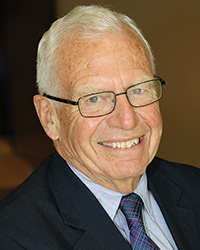
October 27, President Biden announced funding to convert empty U.S. offices into housing. As Ashram Khalil, Associated Press, highlighted the initiative in Federal Times, October 27,2023, the Federal initiative involves the Departments of Housing and Urban Development (HUD) and Transportation, General Services Administration (GSA) and Office of Management and Budget (OMB). Accessing funding from the Transportation Infrastructure Finance and Innovation Act (TIFIA) and Railroad Rehabilitation & Improvement Financing (RRIF) will be set forth in new guidance to states and municipalities.
The Whitehouse is also releasing Commercial to Residential Federal Resources Guidebook with 20 federal programs across six federal agencies that can be used to support conversions, reports Khalil. This long awaited and anticipated monetary boost to reinvestment activity dovetails well with robust efforts and programs in most states and many locales throughout the nation. Funding will be packaged in a variety of wrappers. These include low interest loans, loan guarantees, grants and tax incentives for developers, nonprofit and for profit, and public sector entities.
Complicated and confusing. Not really. State and local governments have been underwriting these investments for a decade or more, informed by legislation and regulations at all levels of government. Existing projects with similar criteria have been funded, and filled the pipelines. Many shovel ready. Best practices and platforms for feasibility have been developed and revised as needed. The political overlay is the good and the bad of public funding. These federal programs are particularly promising because of the intentional effort to recognize powerful synergies in coordinating improvements to the built environment. What’s also new is the financial scale and scope intended. Multi-year funding in place, too.
Trying harder. On October 27, President Biden announced funding for and highlighted programs from HUD, transportation to support conversion of languishing office properties, vacant from post Covid hybridization.
The CMBS markets are awash in unfunded and defaulting property loans. Regional banks are rearranging portfolios. Bifurcation has meaning and application for both funding sources. Still, there is a limit to get around with rate uncertainties even with persistent buoyancy in the economy. Rates can have breaking and a braking effect on the economy.
Beige Book reports released in October, reports little to no change in economic conditions in most districts, generally stable economic conditions, modest downward risk, and outlook, stable, downward risk. Both related to anecdotal surveys in the 23 federal districts and continuing uncertainty in FOMC rate guidelines. Federal Reserve Bank districts are mixed bags of employment and trade. Old news, inflection trending not yet apparent or consistent.
Employment gains persist. 150,000 jobs for October, 336,000 jobs added for September 2023, higher than Dow Jones September consensus estimate of 170,000 wages, too – continue trend of over 4% from 12 months ago. Based on various remarks from Fed chair Powell and others, the expectations are a pause. The FOMC paused on October 31. The crash and burn on the rate racetrack has been building with many properties being taken back by lenders, bankruptcies, bifurcation and other restructuring. Opportunities for mediating the rate and recessionary pressures. Servicer’s are slow and silent. Mostly. Mortgage brokers are actively finding fits. All the eggs in the market are different. Cracked, fresh, range free, different colors and sizes. Some past expiration. Exasperation. Exhaustion.
The built environment needs a kick. Now we have a hopeful and generous prospect for funding at federal level as well as grassroots. The recovering economy with apparent pivoting will predictably benefit from this monetary surge.
David Kirk is founder, chief executive officer of Kirk & Co., Boston, Mass.








